HII and Babcock have announced the formation of a new joint venture, H&B Defence, aimed at accelerating the development of Australia’s nuclear-powered submarine capabilities under the AUKUS security partnership, according to a press release from the companies.
The firms say that H&B Defence will leverage expertise from Australia, the United Kingdom, and the United States to support various aspects of Australia’s nuclear submarine pathway.
This includes workforce development, nuclear infrastructure design and build, submarine defueling and decommissioning, nuclear waste management, and future sustainment.
Headquartered in Canberra, H&B Defence will collaborate with government, industry, and academic stakeholders to develop a skilled sovereign nuclear workforce in Australia.
Tim Brown AM, a veteran of the Royal Australian Navy, has been appointed Managing Director of H&B Defence. Brown brings extensive experience in submarine operations and defence strategy, having commanded both Collins class submarines and ANZAC class frigates.
“H&B Defence’s mission is to transform Australia’s submarine industrial landscape to position the nation to operate nuclear submarines,” Brown said in the release. “This joint venture will focus on equipping Australia with the requisite industrial base, supply chains, and workforce required to support and manage all aspects of the nuclear-powered submarine lifecycle.”
Michael Lempke, HII’s President of Nuclear and Environmental Services and HII Australia business lead, will chair the company board, which also includes Babcock Australasia CEO Andrew Cridland. Lempke stated, “H&B marks a significant step forward in an enduring partnership. HII is excited to work through H&B Defence to leverage the deep-rooted experience and advanced methodologies from Australia, the UK, and the US to support AUKUS Pillar 1.”
Cridland noted, “The formation of H&B Defence is an exciting day for Babcock Australasia as we continue to build on our existing and long-term partnership with the Australian Government in support of our nation’s defences. H&B Defence brings together Babcock and HII’s collective history in nuclear and the best and brightest minds to support AUKUS Pillar 1.”
The companies state that H&B Defence aims to ensure that Australia is prepared for the Virginia Class nuclear-powered submarines and the SSN-AUKUS.


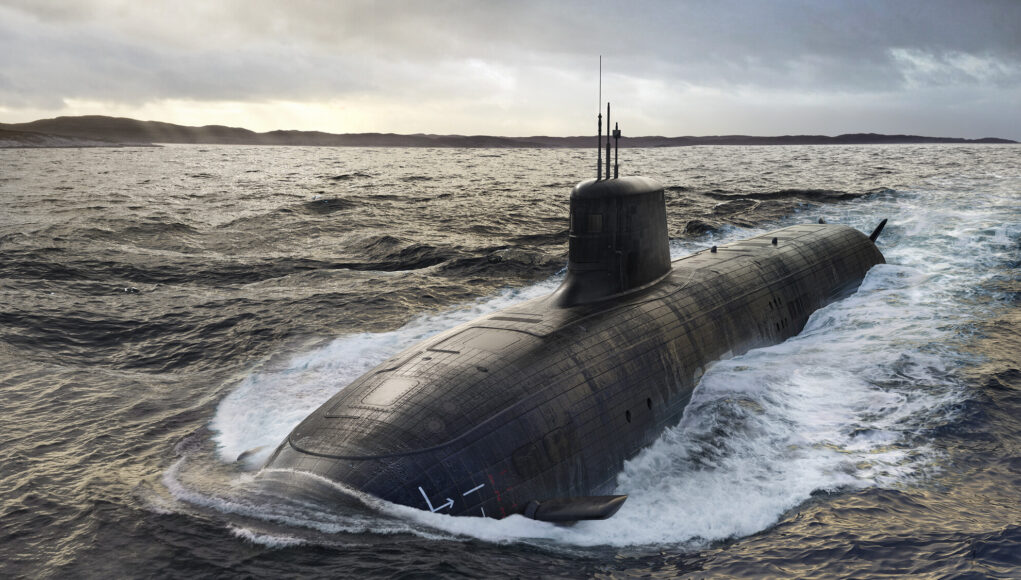
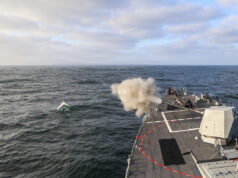
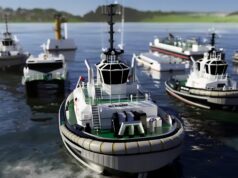
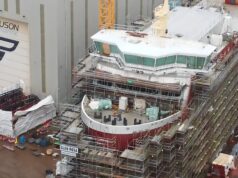
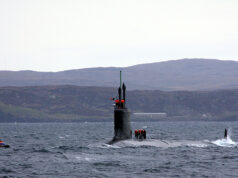
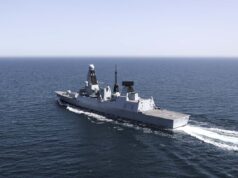

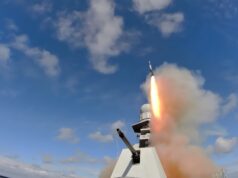
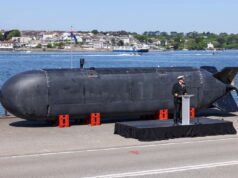
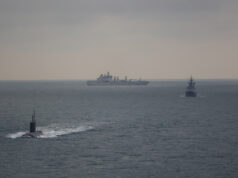
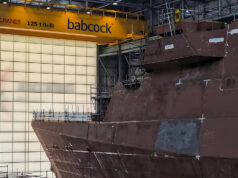

Now that the silly as**ole in the US Navy office that said SSN A would be an all US technology submarine has had to recant his statement, I’m cautiously optimistic about this program.
At present China’s industrial base has 200 times the ship building capacity of the USA.
The UK can and should play a significant part in the building and maintenance of maritime assets to help ensure NATO+ stays ahead of China.
The ability to crank out dozens of SSN’s between the UK, USA, Australia and hopefully eventually Canada will be key to this.
I wonder if this program could eventually serve as a testbed for doing the same with frigate and carriers [post-QEs, however long in the future that may be]?
I doubt it as US surface ships are ridiculously expensive compared to ours, hard to see any benefit as well. US submarines are world beating but their surface vessels are nothing special and they are now adopting European design but with vastly increased costs.
No disrespect to the US Navy, their sensors, weapons and systems are top notch as are their personnel but after the cluster f**ks that are the Zumwalt and LCS and the new saga begins with the constellation class I can’t see any benefit to either Australia or the UK in partnering with the US on surface ships. If the US partners with anyone on surface ships it’s likely to be Korea or Japan.
US navy budgets spent in Korean and Japanese yards could easily produce an Uber navy able to take on China at all levels but it won’t happen.
In the short – even medium term – this is just another step that brings some firmness to an intention. The first AUKUS is still a long way off. But the determination to combine countries into binding arrangements for mutual benefit is still important. The greatest problem China has can’t go away. It is geographic. So long as the political will behind AUKUS can be maintained and makes observable steady progress, that in itself is significant
Yes, however Chinas geography problem may not last forever. Renewable energy and moves away from fossil fuels may cut their dependence on oil. Their population collapse may also remove their need to import so much food and if Russia collapses Siberia maybe one part of greater China giving them the kind of geographical advantage the USA has in terms of self sustaining resources.
By the end of the 21st century China will probably be smaller than the USA so the danger will have passed but it’s essential that we all be prepared for 2050 when China may be at its zenith.
SSN A should be a massive part of that deterrent force.
This will be the biggest capability the UK brings to any party in the pacific.
Jim it will never happen ! Unlike Australia Canada is pretty well asleep at the wheel, all they are doing is replacing existing capability when required on a 1 to 1 basis, no more and no less.
They will go for an AIP design and probably from Spain, Japan or S Korea as they build ocean going boats.
SSN are incredibly expensive to design, build, crew and maintain so they will not go for SSN. They actually had the chance 2 decades ago and they weren’t prepared to properly fund it. That situation hasn’t changed and to be perfectly honest they have other things they have to take care of before they even think about it.
Earlier this week NATO issued the latest reports on who is spending what in NATO, Canada is a very rich country but is the 5th lowest overall spender on Defence at only 1.3% of GDP and spends the 2nd lowest % of its budget on equipment (lowest is Belgium).
This year once converted to US $ UK is spending 82 billion and Canada only 30 billion.
I cannot stand Trump but one thing he was bang on with was calling out NATO countries that don’t pull their weight.
In 2014 only 3 countries in NATO spent over 2% of GDP on Defence US, UK and Greece.
In 2024 it’s 23 doing so and only 8 not doing so, the 3 most notable are Spain, Italy and Canada
Liberal Party announced future defence increases to ~1.7% of GDP from the current ~1.3%. Below pledged minimum, inadequate to develop SSNs, but still an improvement over current effort. Patently, Canada leverages geography, just as Ireland does.
Potentially a Conservative government w/ a clear majority and a mandate to increase defence spending in response to Orc and ChiCom simultaneous naval ops in Arctic, Atlantic and Pacific? 🤔
He’s on about accelerating of the programme,any UK involvement will delay it more than anything I mean what other navy takes as long to build warships and submarines as long as we do ?
Completely the opposite, UK involvement will actually speed the process up, you are working on the assumption that U.K. industry cannot build quicker. It has, it still can and now it’s being properly funded it will.
The only reason we build so slowly these days is because that’s how HMG wants it done. The way the Treasury pays the staged payments dictates the ordering of long lead items and the build schedule. MOD have too many programmes all coming online at the same time for the available budget. So the only way to get anything is long and slow over a long period of time. Stupid thing is it costs way more overall in the end.
The Astutes and T26 are a case in point, in the former case the schedule of payments has been stretched to the absolute maximum possible. It would probably have been even longer but the Vanguard replacement cannot be delayed.
But things are changing BAe have quite openly said they can build the T26 a lot faster if needed. Which may be the case if they get the Norwegian order. The last time BAe on the Clyde had a build programme that was sensibly funded was the T45. They delivered 6 in 5 years and 5 of those were built the old way, outside on a slipway.
The investment in new facilities, infrastructure, training and recruitment is all tabbing along nicely to deliver exactly what has been promised. If you talk to anyone who works or has worked at Barrow or here on Raynesway here in Derby they will all tell you the same. Nothing has been seen like this since the 50’s.
You also have to remember that the US is in an even worse state than us, ordering 2 SSN pa and averaging 1.2 delivered, needing to build 66 new SSN by 2045 and 12 new Columbia class SSBN. And all because they neglected to keep their industry going in the late 90’s and the 0’s.
USN, evidently. 🤔😳😱🤬☹️
The USN takes as long, and for the same reasons.
The Russian’s take 20 years to build an SSN
Interestingly Canada, Germany and Norway have started discussing forming a version of the AUKUS treaty to form a technology sharing pact to defend the North Atlantic/Arctic. German submarine tech is on offer to Canada with the 212CD being built by Germany/Norway, though Canada are refusing to commit to it (still holding out hope for SSN’s) as well as other joint technology programs
With Canada having such a large EEZ including large areas of the Arctic, they would be better served imitating Aus and going for a Nuclear option. I’m sure if they were inclined, Canada would be welcomed into the AUKUS club.
For whatever reasons, they don’t seem to want to spend what is actually required to fulfil their commitments, which is a shame, as they would bring alot to the table.
Sir you have the gift of under statement. I hate to think what is going to happen if Trump gets back in, because he did call them out on it.
Only bloody thing I agree with him about.
Yes NATO countries under-spending has been a theme for several decades now. A bit of optimism is now creeping in as some countries finally up the ante in this regard, but, there will always be some who prefer to lag behind. The orange boufont is correct in that regard.
Remember they did try to get the Trafalgar class SSN in the 80’s and the US knocked them back.
Their under ice threat is almost entirely Russian and the Russian navy is increasingly less threatening to anyone.
I would like to see Canada in AUKUS with a fleet of SSN’s but that would diminish the resources of the three AUKUS nations to build SSN’s and put boats in the hands of a nation (Canada) that’s likely going to be sitting on the sidelines in a fight with China.
To be fair Jim, I expect Aus wouldnt have been admitted to said nuclear club back in the 80’s either. But now, things change dont they, it makes absolute sense for Can to join the ‘club’ if only they were prepared to pay for it!
The under ice threat will grow from not just Russia, but also PRC over the coming decades, especially as the ice limit recedes due to global warming and the hunt for mineral deposits gathers pace and becomes more accessible. Canada will have a huge role to play in monitoring the Arctic region, a task for which it is currently vastly unprepared for.
At some point in the not so distant future, they are going to have to wake up and smell the coffee (so to speak), and totally overhaul their Navy/Air Force. Its not going to be cheap either.
Deep,
In your opinion, are there any current gen SSKs which can safely conduct ops beneath Arctic sea ice? 🤔 Even w/ climate change, presume that will remain a consideration for the indefinite future.
Morning America, trust all is well in the former colonies? Good question, as SMs they are capable of conducting under ice ops, but, in short none,its not really where they should be going given their propulsion limitations(need to recharge the battery on a regular basis). Even with AIP, it only gives them approx 3 weeks extra dived endurance, but thats only at 3-4kts. Any issues they will need to get out from under the pack ice or find a Polynya in the pack ice, a potentially time consuming process which they might not have.
Back in the day, did a few trips up into the MIZ (Marginal Ice Zone) and further under the ice when we were Orc hunting. Its a bit of a risky place to be, you will need speed and endurance to get yourself out of trouble depending how far under the ice you are. Not a SSK trait really. There is a reason why the only PR shots of SMs surfacing at the N pole are SSNs.
Deep,
Thanks, was concerned that would be the answer. Presume next gen RCN SSKs could still contribute to Orc patrols in the NA and ChiCom hunting in northern Pacific and the ice free portion of passages to the High North. 🤔
Had a random thought that the least expensive Canadian option to pursue SSNs might be to emulate the initial phases of AUKUS Pillar 1 and simply lease/purchase second hand Virginia, Astute or conceivably SSN-A boats. Rely on Uncle Sugar to supply a majority of the nuclear infrastructure. Minimal economic/industrial policy benefits for Canada, but surely only a fraction of the cost. 🤔
Personally, beginning to appreciate the potential benefits of a Parliamentary form of government. Reasonably certain 70-75% of electorate would choose any viable alternative to Column A or B. 🤔😳😱☹️
There was a serious proposal to enable Canadian procurement of SSNs in the 80s, but the Canadians ditched it when they realised how much it costs both to build them and sustain the capability. Conventional boats are obviously cheaper but not too well-suited to operating under the ice.
The Americans nixed it. Due to 1950s treaty, UK can’t share nuclear military tech without US say so. America also has an agreement with Canada that they used as well. So Canada couldn’t buy and Britain couldn’t sell.
We ended up selling them some sub-standard (no pun intended) conventional subs.
They can talk all they want big difference is Canada doesn’t pay its way.
Perhaps not, but at 1.7% GDP and without the burden of nuclear, they could certainly pay for a reasonable conventional force (pro-rata). On a par with say Spain. If they can find a speciality and lead NATO on it, they will pull their weight. Think of Portugal and REPMUS.
The problem with that argument is Spain is even worse at stumping up money than Canada and has very lop sided approach to Defence. Army and Airforce are way below what is required for what is a fairly large country. Emphasis is on the Navy and exports and to be honest they are providing strength in an area where it really isn’t needed.
Italy and France have the Med pretty well sown up, they don’t seem to keen on ASW warfare for Atlantic which is where they would deploy.
As for Canada, it’s the 10th largest economy in the world and really should be pulling its weight. If I had to pick something for them to specialise in it’s ASW and Artic Warfare.
The major issue with all these nations is they bring very little to the party and expect much. Germans normally far more interested in jobs than military capability and they are a massive security risk as is Norway.
The US and the UK can cooperate like this because they have done so for decades and the UK in particular has constantly gone out of its way to show the US the advantage of working with it.
Australia was able to rely on a unique historic relationship with the UK to gain access to nuclear submarine technology then have the UK lean on the US to let them in.
Australia offers the US the absolute best basing options for a future war against China and it brings loads of cash to support UK programs.
All three nations have been part of the most sensitive intelligence sharing treaty in history.
I can’t see Germany, Norway or anyone else matching that.
If anything the US is looking for less Allie’s not more and Germany and Norway have nothing it needs.
Australia also offers the US vast expanses and weapons testing ranges.
The recent announcement that RAAF Super Hornets will be used for flight tests of the USAF Hypersonic Attack Cruise Missile (HACM) in Australia is a case in point.
Australia has been working jointly with the US on hypersonic development programs for some time.
It’s also positions the RAAF well for future acquisition of operational hypersonic missiles since the systems integration work for the Super Hornets will already have been done on RAAF pilots will have experience operating hypersonic weapons not to mention potential technology transfer benefits.
A hypersonic capability would be an additional deterrent for an expansionist China in our region.
Australia brings a lot to the party, it’s a continent sized country with deep pockets and virtually no domestic defence industry to screw up collaboration.
It’s Saudi Arabia without the political and religious hang ups.
Australia the UK and the USA combined is a hyper power. Able to control and dominate every ocean and almost every sea on the planet as well as space.
China can’t do this, they need to spend a fortune bribing Argentina just so they can communicate with satellites and space craft on the other side of the world.
👍😊
Hope that at some point, RAF and RAF are offered attractive terms for lease/purchase of B-21.
RAAF 🙄 (autocorrect)